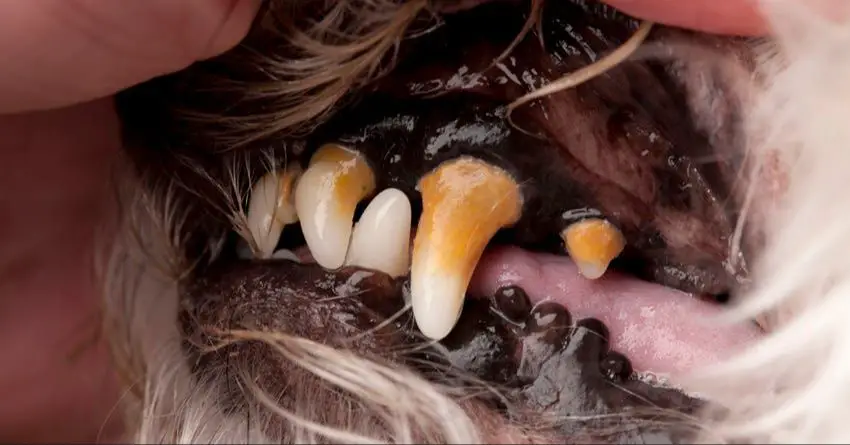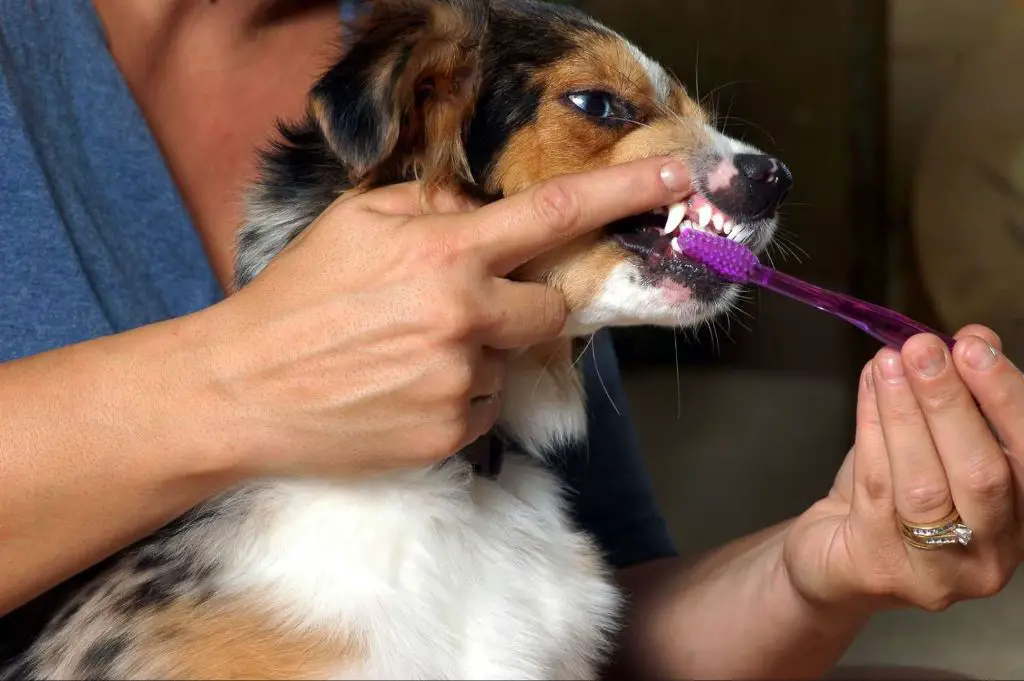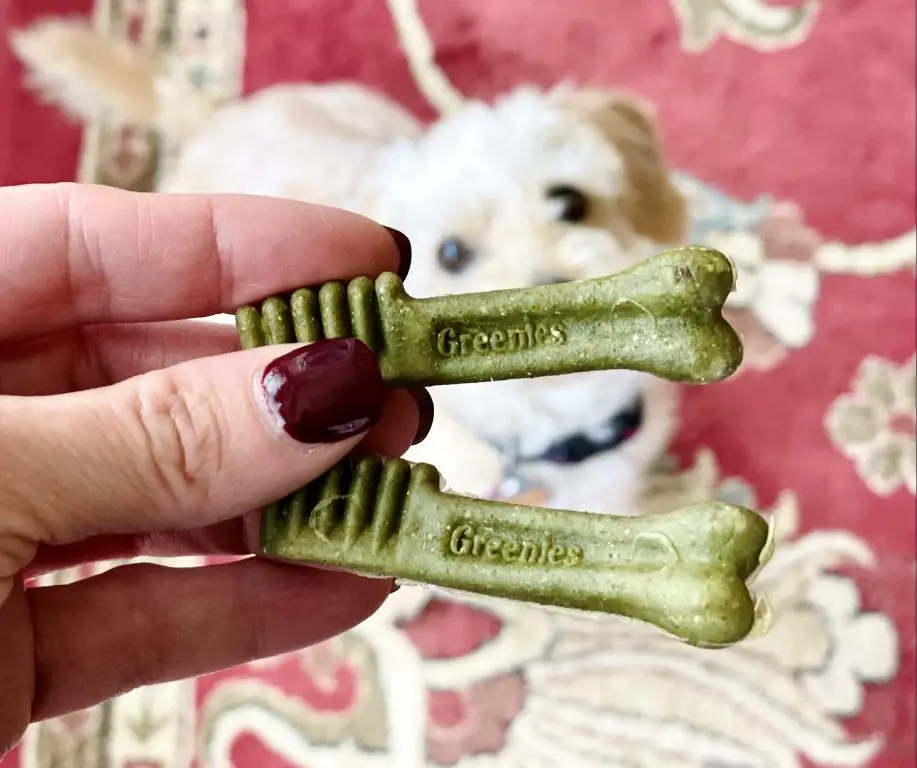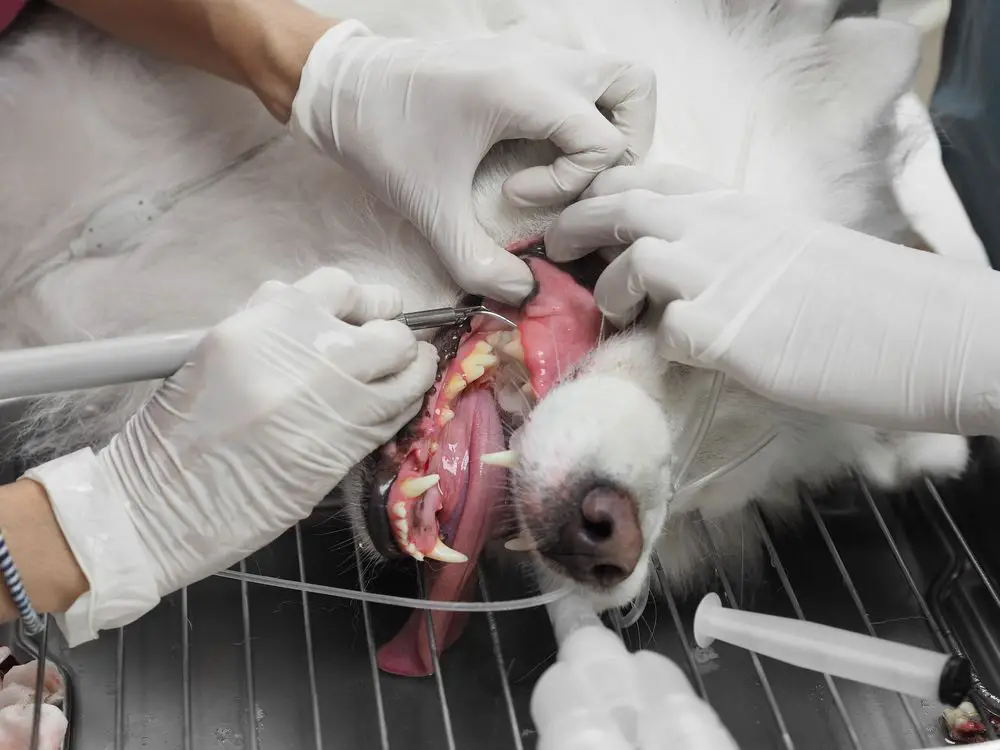Introduction
Dental care is just as important for dogs as it is for humans. Like people, dogs can develop plaque and tartar buildup on their teeth over time. Tartar is a hard yellow or brown deposit that forms when plaque is allowed to build up. It’s made up of food particles, saliva, and minerals from the saliva.
Tartar buildup usually starts at the gumline. As more plaque accumulates, it spreads under the gums and across the teeth. This can cause bad breath, tooth decay and gum disease. Severe tartar accumulation requires veterinary dental cleaning to remove it. But through regular at-home dental care, tartar can be effectively prevented and managed.
This guide covers signs of tartar in dogs, dangers of leaving it untreated, tips for prevention, and safe ways to remove mild buildup at home before it becomes a bigger problem. Proper dental hygiene is key to dogs’ health and quality of life.
Signs of Tartar Buildup
There are a few key signs that indicate your dog may have a tartar buildup on their teeth that needs attention:
-
Yellow or brown buildup on the teeth – This discoloration is a sign of plaque turning into tartar. The buildup will appear along the gumline and between teeth initially.
-
Bad breath – As plaque and tartar accumulate, they begin to trap bacteria underneath. This bacteria releases gases that have a foul odor.
-
Inflamed gums – Tartar buildup can irritate the gums and cause inflammation or redness. Inflamed gums also tend to bleed easily.
-
Loose teeth – Over time, a heavy tartar buildup can lead to periodontal disease which damages the structures holding the teeth in place, causing them to loosen.

Paying attention to these signs of tartar accumulation can allow you to take action before the buildup gets severe or causes dental disease.
Dangers of Tartar Buildup
Allowing tartar to build up on your dog’s teeth can lead to serious health issues if left untreated. Here are some of the main dangers:
Pain
As tartar accumulates, it presses on the gums and causes inflammation and discomfort. Your dog may show signs of pain like reluctance to eat, dropping food, or aggression when you touch their mouth.
Tooth Loss
The inflammation from tartar can cause receding gums, eventually exposing the tooth roots and leading to tooth loss. This is extremely painful for dogs.
Infections
Tartar below the gumline provides an ideal environment for bacteria to multiply. This can lead to infections in the mouth, jaws, and bloodstream.
Organ Damage
These infections put strain on internal organs like the heart, liver and kidneys. Tartar has been linked to organ inflammation, endocarditis, jaundice, and kidney failure.
Preventing Tartar
Preventing tartar buildup in the first place is the best way to keep your dog’s teeth healthy and avoid more intensive dental care. There are several effective methods for preventing tartar formation.
Brushing
Brushing your dog’s teeth daily is the single most effective way to remove plaque and prevent tartar. Use a soft-bristled brush and dog-safe toothpaste. Gently brush all surfaces of the teeth in a circular motion. Making brushing part of your dog’s routine when they’re young will help them readily accept it as they grow up.

Dental Chews
Giving your dog dental chews 2-3 times per week will help scrape away plaque and tartar. Look for veterinarian-approved options made specifically for dental health. Avoid overly hard chews that could crack teeth. Always supervise your dog with any chew to prevent choking.
Dental Diet
Feeding dry food formulated for dental health can prevent plaque buildup. The crunchy kibble texture helps scrub the teeth clean as your dog chews. Choose an option approved by your veterinarian for your dog’s needs and age.
Removing Tartar at Home
One of the most effective ways to remove tartar from your dog’s teeth at home is by brushing their teeth regularly. Use a soft-bristled toothbrush or a finger brush specially designed for dogs. Human toothpaste should not be used as it can upset your dog’s stomach – instead, use a pet-safe enzymatic dog toothpaste.
Get your dog comfortable with having their teeth brushed by starting slow. Let them lick some dog toothpaste off your finger so they get used to the taste. Then gently rub your finger along their teeth and gums, praising them throughout. Once they seem comfortable with this, introduce the toothbrush. Apply some dog toothpaste and gently brush in circular motions, focusing on the outer surfaces of the teeth. Over time, aim to brush all surfaces of their teeth.
Brush at least 2-3 times per week for maintenance. Daily brushing is ideal for dogs with significant tartar buildup. Patience and positive reinforcement will help make brushing a pleasant experience for your dog. Consistency is key – the more often you brush their teeth, the more tartar you’ll remove and prevent from returning.
Dental Chews and Treats
Dental chews and treats can help remove tartar and plaque from your dog’s teeth as part of a dental care routine. Some popular options include:
Rawhide chews – These chews made from cow or pig hide can scrape away tartar. Look for treats specifically marketed as “dental rawhide.” Only give these under supervision to avoid choking hazards.
Greenies – These popular dental treats are made with natural ingredients and come in different sizes for different dog breeds. They help clean teeth down to the gumline as your dog chews.

CET chews – These chews contain an enzyme that binds to plaque and tartar to help break it down. They come in sizes for dogs of all breeds and can be given daily.
Dental bones – Edible bones made from ingredients like rice, sweet potatoes, and chicken can clean teeth gently while dogs chew. Look for larger sizes to avoid choking.
In general, aim for chews that are difficult enough that dogs have to work at them for a while. Give an appropriate size for your dog and supervise them while chewing. Dental chews work best along with other oral care.
Dental Rinses
Dental rinses can help prevent and reduce tartar buildup on your dog’s teeth between brushings. There are a few different types of dog dental rinses:
- Water additives – These are added to your dog’s drinking water to reduce bacteria in the mouth. They usually contain chlorhexidine or zinc gluconate as the active ingredient.
- Gels – Gels are applied directly to the teeth and gums using a finger brush or cotton swab. The active ingredients coat the teeth.
- Sprays – Sprays are misted onto the teeth and gums. They provide targeted delivery of the active ingredients.
Follow the dosing instructions on the specific dental rinse you choose. Water additives are usually administered daily, while gels and sprays may be used daily or several times per week.
To apply a dental rinse gel or spray, lift your dog’s lips to expose the teeth and gums. Spray or rub the gel evenly over all surfaces of the teeth and gums. Let your dog lick their lips to spread the rinse over the teeth. Provide praise and treats after application.
Consistency is important to see the full benefits. Dental rinses reduce bacteria and make the teeth inhospitable environments for tartar to adhere and build up.
Scaling/Scraping Tools
You can purchase dental scaling tools to remove tartar at home. These tools allow you to scrape plaque and tartar off your dog’s teeth similarly to a professional dental cleaning.
Hand scalers have a long metal handle with a small metal hook or loop on the end. The hook is used to scrape plaque and tartar off the tooth surfaces. Scaler tips come in different sizes and angles to allow you to access all areas of your dog’s mouth.
When using dental scalers, take precautions to avoid injury to your dog’s gums or mouth tissues. Work carefully and gently, avoiding scraping too hard. Only scrape the tartar and plaque, not the tooth enamel. Pay extra attention around the gumline where tartar accumulates.
Proper technique is important when using scrapers. Scale one section at a time, holding your dog’s muzzle to keep their head steady. Lift the lips to expose the teeth and scrape with light, short strokes. Focus on the back surfaces of the teeth first. Reward your dog with treats for cooperating.
While dental scalers allow DIY tartar removal, they can pose risks if used incorrectly. Improper use could lead to gum damage or mouth lacerations. Consider having your vet or groomer demonstrate proper scaling technique before attempting it yourself.
When to See a Vet

In some cases, it’s best to have your veterinarian clean your dog’s teeth instead of attempting it at home. Signs that your dog may need professional dental work include:
- Severe tartar buildup that covers the entire tooth surface
- Advanced periodontal disease with inflammation, receded gums, and loose or infected teeth
- Teeth that are loose or ready to fall out due to decay under the gums
Your vet can fully sedate your dog and use special tools to clean above and below the gumline. They may need to extract damaged teeth that can’t be saved. Left untreated, advanced dental disease can lead to infections spreading throughout the body. It’s important to schedule regular dental cleanings and exams to stay ahead of any problems.
Aftercare
Once you’ve removed the existing tartar from your dog’s teeth, it’s important to continue monitoring their dental health and prevent future buildup. Here are some tips for aftercare and ongoing dental care:
- Brush your dog’s teeth daily if possible, using a toothpaste formulated for dogs.
- Provide dental chews and treats to help scrape away plaque.
- Use an oral rinse or gel regularly to reduce bacteria.
- Schedule annual veterinary dental cleanings as needed.
- Monitor your dog’s teeth weekly for any signs of tartar buildup.
- If you see tartar recurring, use scaling tools to remove it promptly.
- You may need more frequent dental cleanings for dogs prone to heavy tartar.
- Follow up with your vet within a few weeks after cleaning to ensure proper healing.
- Alert your vet if you notice any ongoing dental issues or irritation.
With diligent at-home dental care and professional cleanings when needed, you can keep your dog’s teeth clean and healthy long-term.